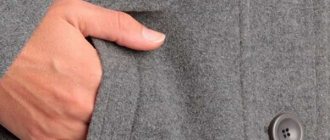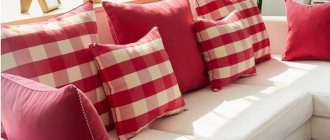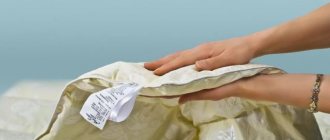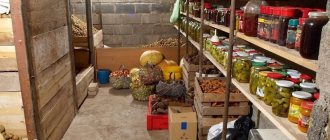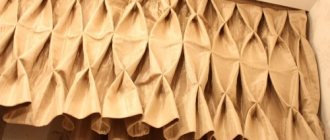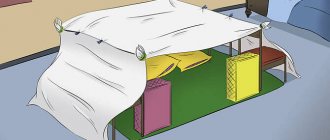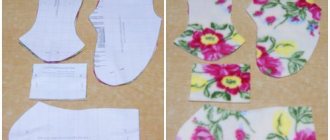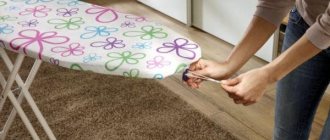Purchasing bedding is always associated with considerable costs, which for thrifty housewives is a blow to the family budget. The solution is to sew things yourself with your own hands. How to sew a plain, quilted or bonbon blanket is described below. The article also contains tips on how to determine the type of material, filler, and the principle of fabric calculation.
Types of DIY blankets
You can sew any item yourself if you rely on the recommendations of experienced craftswomen. Before you start sewing, you need to determine the type of future product as a whole, think about the front side, the back side, and the filling.
There are two types of blankets:
- Quilted products do not cake, the filling does not bunch up, but it is difficult to wash them because they are large, heavy, and bulky.
- Simple products consist of a cover and inner padding. Often the filling clumps together, spoiling the appearance, but washing is simplified since the inside can be removed.
Sewing the front side, depending on the technique, is the most energy-intensive process. This is especially acute when creating things in the patchwork style with your own hands. Products are assembled from small blanks, the standard sizes of which range from 10 by 10 cm to 30 by 30 cm and more. In prefabricated patchwork, the flaps are sewn together using the quilling technique, they are sewn onto the base.
Modular blankets differ from those created in the patchwork style in that the flaps are sewn together in the correct geometry. Blocks are square, rectangular, pentagonal. The process is labor-intensive, because sewing many blanks into a single fabric is not easy.
Denim synthetic blankets look original. They are practical, non-staining, but warm and durable. It is not recommended to quilt items made from denim fabric - this affects the appearance. Jeans items are taken for a picnic or a walk.
It takes a long time to sew blankets in the bonbon style on your own, but the result will please you, since the thing turns out to be warm and unusual. For children's blankets, natural fabrics in bright colors or with patterns are used.
Let's start sewing
We offer a detailed master class on how to sew a quilt using patchwork technology. The technique is not complicated and is suitable for beginners. After this lesson there will be no questions left about how to make such a bedspread.
Before you start working, it is best to make a sketch of the future blanket. The drawing should be schematic.
For sewing you will need:
- Template for squares (in MK the Lego constructor was used);
- Fabric for the top of the blanket: 32 squares of 4 colors with a side length of 19 cm (in MK these are squares of green, red, blue and orange);
- 7 squares with a side length of 38 cm;
- 4 strips of plain fabric 20 cm wide (2-2.20 m long, and 2-1.4 m long).
Article on the topic: How to use vacuum bags for clothes, and which ones are better to choose, video instructions
Step 1. Decide on the desired dimensions of the blanket. In MK, the blanket is sewn in quite large sizes, so if you want to make a baby blanket, just use all the materials in a shorter length.
Step 2. Decide on the material to work with.
Step 3. From the selected fabric, make blanks of the required sizes.
Step 4: Sew appliques onto the squares (if you chose this quilt design).
Step 5: Now sew the large 4-piece squares together.
Wrong side:
Face:
Carefully iron the sewn squares:
Step 6. Lay out the finished squares. Take a look at a preliminary version of your future blanket.
Step 7. Sew all parts of the blanket top together.
Step 8. Now let's start assembling the blanket. Place the base fabric right side down.
On top is the filler.
The blanket is almost ready, all that remains is to sew it.
Step 9. Pin the layers together and stitch along the seam lines.
Step 10. The edges can be finished using braid, or you can simply turn the front and back fabric over and stitch them together. For greater confidence in integrity, leave two lines.
Step 11: Your quilt is ready!
Another blanket using the same technique.
Front side:
Wrong side:
As you can see, making such a blanket is not at all difficult, and the result will delight you for many years. This blanket is a great option for a gift.
How to calculate fabric
The amount of material for a bed and a duvet is calculated differently. In the first case, the wide side of the cut is equal to the sum of the width of the mattress, two heights, plus an allowance of 12.5 cm. The blanket will hang from the bed, overlapping the side.
On the long side, the value is calculated by adding the length of the mattress, its height, seam allowances and overlap of 7.5 cm. For products without assembled borders, add 10 cm to the width and 5 cm to the length.
The width of the down cover is equal to the sum of centimeters measured along the wide side of the mattress, 2.5 cm for allowances. The long side of the product is calculated according to the same principle - 2.5 cm is added to the length of the mattress. Sewing a blanket with your own hands is simplified by choosing easy master classes.
Pattern
To sew a simple children's or adult blanket, you will need three main parts - two pieces of fabric and a padding polyester fabric. Since the filling will be inside the cover, novice seamstresses often make its size a little smaller. This is the most common mistake.
Filler cutting options:
- The size of the padding polyester is equal to the details of the cover. A common option. When sewing, the filling will wrinkle slightly, fill the edges and corners of a child's or adult blanket with high quality, and there will be no voids;
- The padding polyester is larger than the cover. Use this option if you want to sew your product using the patchwork technique or play it safe. In this case, the fabrics are placed on top of each other, re-measured, quilted, only then the excess is trimmed off and a bias tape is used to make the edging. If you cut the padding polyester in advance, then after sewing the edges of a child's or regular blanket will be thinner, the braid will only capture the fabric.
It’s good if the width of the cut allows you to make a one-piece pattern. There are usually no problems with baby blankets. When creating large products, sometimes you have to join several canvases. In this case, you need to first measure your pieces, making allowances for allowances, then sew and trim off the excess.
How to choose material
The blanket consists of three parts: top, bottom and insulation. For each component, the material chosen is different, but for the first two it can be the same. The front side is made of fabric that does not cause allergic reactions. In addition to being hypoallergenic, the material is chosen with high strength.
The upper part of walking blankets for newborns, camping, and summer cottage options is made from water-repellent raincoat fabrics. For winter products, the thinnest furniture upholstery is used.
The front side is made stronger than the lining, which increases the durability of the item as a whole.
The lower part is made of satin, cotton fiber, twill, and silk. Cotton fabric gets dirty quickly, has a low level of breathability, and does not last long, so it is used for children's summer blankets. Winter padding blankets are made from calico and flannel.
Satin, silk, twill are distinguished by their lightness, dirt-repellent properties, and good vapor permeability. The disadvantage of these fabrics is slipperiness. Some will enjoy sleeping under such a blanket, while others will toss and turn.
If these options are not suitable, then bamboo canvas is the only solution. It feels like cotton fabric, but has a higher level of wear resistance. The fabric does not cause allergies, is antistatic, and has high mechanical strength.
What types of wool can be used
Camel wool without a cover is harsh to the touch, but it allows air to pass through perfectly and weakens the effects of electromagnetic rays.
You might be interested in what fabrics are used in cars for interior trim
Cashmere does not cause allergic reactions, relieves symptoms of rheumatism and manifestations of osteochondrosis. Often used for small children due to its soft texture. Mountain goat wool is highly valued for many reasons.
Llama wool is the lightest, so it is suitable for people suffering from various ailments. The healing effect is provided without fabric covering.
Camel wool, despite its harsh fibers, is quite in demand on the market. This woven blanket costs much more than a quilted one.
Quilted with satin finish
Sheep
A sheep wool blanket relieves nervous tension and muscle pain. Sleeping under a sheepskin blanket helps you quickly restore strength. The therapeutic effect is reduced when the blanket is used in a fabric cover or duvet cover. Sheepskin helps restore healthy sleep.
For your information! Sheep wool blankets can be susceptible to dust mites if not properly cared for. These microorganisms cause allergies. Periodic ventilation will reduce the risk of infection.
Woven single sided
Merino
A merino wool blanket is amazingly soft and airy. A special breed of sheep, raised on special pastures, produces valuable wool for the production of threads and fibers used in the manufacture of rugs, blankets and knitting threads.
The finest product for a child
Yak wool
Yak down has exceptional thermal insulation properties and is lightweight. Living high in the mountains, the yak easily tolerates heat and cold. The animal's coat is adapted to withstand persistent frosts, and therefore is able to retain heat. This yak wool blanket is light and airy.
Children's blanket
Other types of raw materials
The use of woven wool blankets led production to experiment with adding synthetic fibers to the raw material to save on natural filler.
By type, such components are classified as follows:
- bamboo filler is hygroscopic and has the ability to equalize temperature;
- silk prevents the appearance of fungi and mold, suitable for allergy sufferers;
- The downy, airy filler loses the properties of its special anti-dust mite treatment with each wash;
- polyester washes well, is resistant to electrification, and is durable in use.
You can sew or knit a baby blanket for a newborn baby with your own hands. There is a large selection of wool yarn in specialized stores. The content percentage is indicated on the label.
You might be interested in what Espokada fabric is
Mixed fiber type
How to choose a filler
Synthetic fiber materials are used for insulation:
- holofiber;
- padding polyester;
- synthetic fluff;
- sheet synthetic winterizer, holofiber.
A synthetic winterizer blanket is lighter than the same thing made from holofiber, but tends to cake and lose its shape. These fillers quickly become damp, but are light, warm and harmless. They need to be quilted so that a blanket made of padding polyester or holofiber will last longer.
A fleece liner will make the product heavier and increase the price, but the item will be durable and warm. Fleece transmits moisture unevenly - more on the pile side than on the smooth side. The fleece fabric does not stretch or crawl.
Features of care
Sheep's wool blankets are often produced quilted rather than open. When caring for it, consider the following:
- Washing in warm water is not recommended due to the hairs matting into the felt. The resulting stains should be carefully washed in cool water and dried;
- the product needs periodic ventilation, then the service life will increase significantly;
- quilts can be rinsed in cold water and dried flat without using a hair dryer or heater;
- Blankets should be stored in a canvas bag or chintz pillowcase with free access to air.
In a cotton case
Washing in a washing machine
If the manufacturer allows the product to be washed, then it is better to place it in a special case. Use a delicate wash cycle for wool with minimal speed and a temperature of 30 °C. Machine washable only for sheepskin and camel quilts.
You might be interested in: Characteristics of vinyl artificial leather and its properties, as well as application
Made from natural wool
Wash by hand
A merino blanket can be hand washed, like all wool products. Woven products with satin or silk coating require careful selection of detergent with further washing to remove possible soap stains on the fabric.
Liquid soap can be used to wash a camel blanket, as can hand or delicate washing powder. Do not rub the stained area too hard to avoid damaging the fiber structure. You can use laundry soap at the rate of up to 10 g per 1 liter of water.
The washed product should be rinsed thoroughly and odors should be further removed during drying.
Note! Adding wine vinegar will restore the elasticity of the wool, and lemon juice will eliminate yellowing of the fabric.
Belarusian production
Master class: how to sew a blanket on padding polyester
You can learn how to sew a bedspread by preparing:
- dark fabric for the bottom, bright for the top;
- strong floss threads;
- padding polyester;
- sewing machine;
- needle;
- scissors.
On a flat surface, roll out the padding polyester and colored fabric, cut around the perimeter to even out the edges.
Place a third one on top of two materials - dark. The edges are aligned and trimmed. Secure the three-layer “pie” with pins.
Sew 2 long sides and 1 short side, leaving the opportunity to turn the product inside out. You should retreat 0.5 cm from the edge, as shown above.
Turn out the blanket.
On the fourth, unstitched side, you need to trim the padding polyester a little to make it shorter. Then fold the top fabric so that the edges of the padding polyester are hidden.
Sew all sides around the perimeter, retreating 0.5 cm. The photo shows how the seams are made from the front and back sides.
Now take a needle and thread 6 threads of floss into it.
Having threaded the needle twice in the center of the product, the edges of the thread are tied into two knots. The same actions are performed 8 more times. This is necessary so that the padding polyester blanket does not bunch up when washed.
This is what happened.
Quilting a blanket on a sewing machine
Having dealt with the most difficult part - cutting and calculating the material, you can start quilting the blanket; it is best to do this on a sewing machine.
First of all, we mark the pattern on the fabric. To make it easier and more accurate, you should make a pattern of a figure (square or diamond) from cardboard, and applying it to the blanket blank (sewn three layers), trace it, starting from one corner and ending in the opposite lower corner.
Having outlined the fabric in this way, we sew stitches on a sewing machine, moving from the center to the edges. The seams should match the contours of the outlined figure template as closely as possible.
And a miracle - in this way we get the cutest quilted bedspread!
RECOMMENDATION! It’s better to practice on a small piece of fabric first, and then start making a blanket, so you’ll get better at it and make fewer mistakes. In principle, using a similar technique - patchwork, you can sew not only a blanket, but many other things that will look beautiful and unusual.


